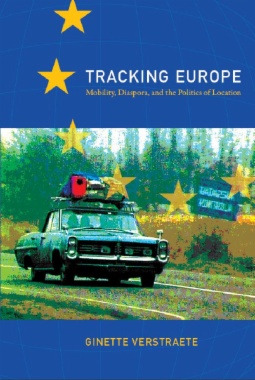Tracking Europe is a bold interdisciplinary critique of claims regarding the free movement of goods, people, services, and capital throughout Europe. Ginette Verstraete interrogates European discourses on unlimited movement for everyone and a utopian unity-in-diversity in light of contemporary social practices, cultural theories, historical texts, media representations, and critical art projects. Arguing against the persistent myth of borderless travel, Verstraete shows the discourses on Europe to be caught in an irresolvable contradiction on a conceptual level and in deeply unsettling asymmetries on a performative level. She asks why the age-old notion of Europe as a borderless space of mobility goes hand-in-hand with the at times violent containment and displacement of people.
In demystifying the old and new Europe across a multiplicity of texts, images, media, and cultural practices in various times and locations, Verstraete lays bare a territorial persistence in the European imaginary, one which has been differently tied up with the politics of inclusion and exclusion. Tracking Europe moves from policy papers, cultural tourism, and migration to philosophies of cosmopolitanism, nineteenth-century travel guides, electronic surveillance at the border, virtual pilgrimages to Spain, and artistic interventions in the Balkan region. It is a sustained attempt to situate current developments in Europe within a complex matrix of tourism, migration, and border control, as well as history, poststructuralist theory, and critical media and art projects.

